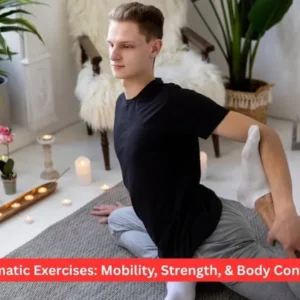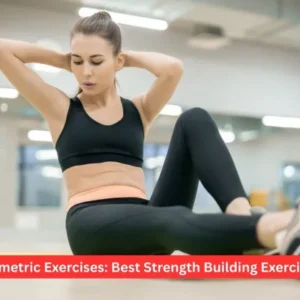A hamstring stretch is a sequence of flexibility exercises that will lengthen and loosen up the hamstring muscles behind your thighs. Frequent stretching will increase flexibility, decrease stiffness, prevent injuries, and improve athletic performance. Hamstring stretches are either static, dynamic, or assisted and therefore suitable for the athlete, desk worker, and the average fitness enthusiast.
- What is a Hamstring Stretch?
- Why Hamstring Stretching is Important
- The Best Hamstring Stretch Exercises
- How Long Should You Hold a Hamstring Stretch?
- When to Do Hamstring Stretches
- Common Mistakes in Hamstring Stretching
- Hamstring Stretch for Athletes
- Hamstring Stretch for Desk Workers
- Hamstring Stretch and Injury Prevention
- The Science Behind Hamstring Stretching
- Hamstring Stretch and Yoga
- Who Should Avoid Hamstring Stretches?
- Tips for Effective Hamstring Stretching
- Conclusion
- Frequently Asked Questions
What is a Hamstring Stretch?
Hamstrings are three muscles: biceps femoris, semitendinosus, and semimembranosus,, which run along the back of your thigh. They are essential in walking, running, jumping, as well as bending your knees.
Any movement that is meant to make these muscles longer to release tightness and enhance flexibility is known as a hamstring stretch. One of the problems that is mostly caused by sit-longs, poor habits, or the absence of mobility exercises is tight hamstrings.

Why Hamstring Stretching is Important
Squeezing hamstrings not only results in discomfort, but it can also result in more severe situations, such as back pain or injury. This is why hamstring stretching is a requirement:
- Enhances Flexibility -Enhances hip and knee range of motion.
- Reduces Injury Risk- A Flexible hamstring will not tend to strain during sports or in routine.
- Relieves back pain- Most back pains are associated with tight hamstrings tugging the pelvis.
- Improves Posture – Adequate flexibility helps to decrease slouching and helps to maintain the spine straight.
- Increases Athletic Performance- Runners, bicycle riders, and athletes depend on powerful and flexible hamstrings to generate explosive power.
Different Types of Hamstring Stretches
There are many types of hamstring stretches, and it will depend on your objective, warm-up, cool-down, or recovery.
1. Static Hamstring Stretch
- Includes maintaining a stretch posture between 20 and 60 seconds.
- Most effective in the post-workout or cool-downs.
- E.g., Sitting on the floor, lift one leg forward, reach forward to your toes, and hold.
2. Dynamic Hamstring Stretch
- Involves the regulated movements that stretch the muscle progressively.
- Applied best prior to exercises as a warm-up.
- 1. Use: Leg swings forward and backward, and the movement is not jerky.
3. PNF (Proprioceptive Neuromuscular Facilitation) Hamstring Stretch.
- Newtonian stretching procedure that incorporates relaxation and contraction.
- Requires a partner or strap.
- Common among athletes and physical therapists as an additional way of achieving flexibility.
4. Yoga-Based Hamstring Stretch
Downward Dog, Standing Forward Fold, or Pyramid Pose is the pose that stretches the hamstrings extensively.
The Best Hamstring Stretch Exercises
The following are the best hamstring stretches that you can incorporate into everyday life:

1. Standing Hamstring Stretch
- Stand erect with one foot slightly tilted forward with the heel down.
- Bend your knee that is at the back and hinge at the hips.
- Hold for 20–30 seconds per side.
2. Seated Forward Fold
- Sit down on the floor, keeping both legs straight.
- Bend forward towards your toes, keeping your back straight.
- Hold for 30 seconds.
3. Lying Hamstring Stretch (using Strap)
- Lie on your back, and put a strap around one foot.
- Lengthen your leg in the air, but your other leg is on the ground.
- Hold for 20–30 seconds each leg.
4. Downward Dog Pose
- Start on hands and knees, raise your hips to the ceiling.
- Keep legs straight by pushing heels up against the floor.
- Hold for 30–60 seconds.
5. Dynamic Leg Swings
- Stand near a wall for balance.
- Bend one of the legs in a forward and back movement.
- Perform 10–15 reps on each side.
How Long Should You Hold a Hamstring Stretch?
The length of time is determined by your goal:
- Dynamic stretching warm-up: 10–15 controlled repetitions.
- Hold each stretch for 20 to 60 seconds during the cool-down (static) phase.
- For deeper lengthening, repeat the flexibility training two to three times per leg.
When to Do Hamstring Stretches
When to stretch: Stretching at the right time is both the most effective and injury-free:
- Pre-Workouts -performable hamstring stretches to warm up muscles.
- Post-Workouts- Combine static stretches to relax and relieve the tension.
During the Day -In case you spend a lot of time in one place, a brief hamstring exercise will loosen it.

Common Mistakes in Hamstring Stretching
There are numerous mistakes that are made by people, which make performance less effective or even strained. Avoid these mistakes:
- Bouncing and Stretching Jerky may result in micro-tears.
- Rounding the Back- Always round on the hips and not on the spine.
- Overstretching- Use it until it is painful; it must be tense, not painful.
Holding Breath – Breathe into the air to loosen the muscle.
Hamstring Stretch for Athletes
Specific hamstring stretches are important to athletes:
- Runners – Avert hamstring injuries and increase stride efficiency.
- Cyclists -Relax the muscles that contract with continuous pedaling.
- Weightlifters -Enhance hip movement on squats and deadlifts.
- Soccer Players- minimize the risk of injury when making explosive sprints.
Hamstring Stretch for Desk Workers
Hours of sitting weaken the glutes and shorten the hamstrings. Easy stretches can be beneficial throughout the day:
- Stretch your chair’s hamstrings by sitting at the edge, extending one leg, hunching forward, and holding.
- Place your foot on a chair or stool and gently hinge forward to perform the standing desk stretch.
By performing these every few hours, posture is improved and stiffness is avoided.
Hamstring Stretch and Injury Prevention
One of the most frequent causes of:
- Sports-related hamstring strains
- Pain in the lower back
- Unbalanced knee pain
You can increase your range of motion and prevent injuries by stretching your hamstrings on a regular basis.
The Science Behind Hamstring Stretching
The advantages of stretching the hamstrings are demonstrated by scientific research:
- Better Muscle Compliance: Stretches make muscles more elastic, which enables them to bear greater loads.
- Stretching tells the nervous system to release tension, which is known as neuromuscular relaxation.
Injury Prevention: Muscle pulls and strains are less common in athletes with flexible hamstrings.
Hamstring Stretch and Yoga
Because it enhances overall mobility and spinal alignment, hamstring flexibility is a major focus for yoga practitioners. The following are common yoga hamstring stretches: Standing Forward Bend (Uttanasana)
- Parsvottanasana, or Pyramid Pose
- Hand-to-Big-Toe Pose in Recline (Supta Padangusthasana)
These stretches promote mental calmness in addition to hamstring lengthening.
Who Should Avoid Hamstring Stretches?
Although hamstring stretches are usually safe, some people should exercise caution:
- People who have severe hamstring injuries should wait for them to heal.
- Those who experience sciatic nerve pain should first see a physician.
- People who have lower back problems should do mild, supported stretches.
Never force a stretch; instead, pay attention to your body.

Tips for Effective Hamstring Stretching
To get the most out of stretching, gently warm up first.
- To prevent imbalances, evenly stretch both legs.
- If necessary, use props like walls, blocks, or straps.
- Make stretching a regular part of your day.
Conclusion
One of the best methods for increasing flexibility, lowering the risk of injury, and promoting general fitness is the hamstring stretch. Hamstring stretches can improve your mobility and general well-being, whether you’re an athlete looking to improve performance, an office worker battling stiffness, or someone with back pain.
Static, dynamic, and yoga-based variations can help you protect your muscles, increase your flexibility, and have a more balanced, healthy body. You’ll quickly notice improvements in everything from sitting and standing tall to running and walking if you incorporate hamstring stretches into your daily routine.
Frequently Asked Questions
1. How frequently should I stretch my hamstrings?
To increase flexibility and decrease stiffness, you can stretch your hamstrings three to five times a week, or every day if they feel tight.
2. Can lower back pain be alleviated by hamstring stretches?
Indeed, releasing hamstring tension reduces pelvic tension, which frequently lessens lower back strain and pain.
3. Is it better to stretch my hamstrings before or after working out?
Warm up with dynamic stretches before working out, and cool down and recover with static stretches afterward.
4. For whom are hamstring stretches inappropriate?
Avoid deep stretches and consult a professional if you have sciatica, severe back pain, or recent hamstring injuries.







